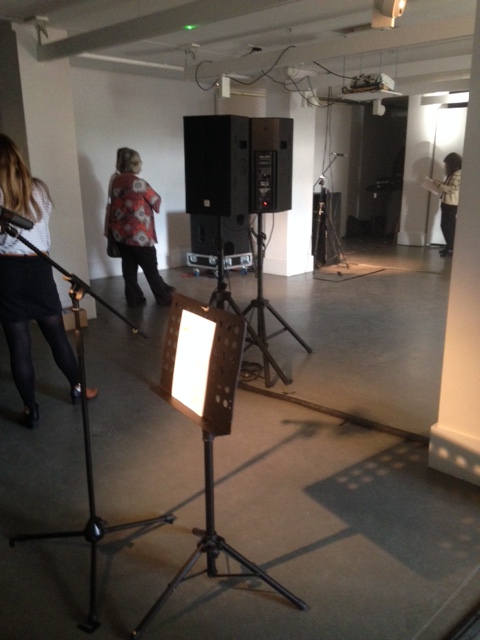This was the second time we had all met together to work on the collaborative piece of performance we would shape. The last meeting was the end of May and it had been 4 weeks since our first tentative steps were taken. I had mused on the ideas and concept I’d initially brought in, themes of renewal, repair, of seascapes and heartbeats. I had wondered what elements of sound would bring these themes together to form a coherent whole. Whether the elements of sound, movement and performative actions would convey the right level of contemplation, intimacy and depth that I felt the themes had.
Leading up to our 2nd rehearsal in Leeds Beckett’s studio space I’d begun to think about the circle itself. Was it big enough for two people to perform in, did it show the interplay of relationships, the weaving in and out, was it a constraint? I added another circle into the sketches and thought perhaps that would add a further space to come in and out of. I envisaged Maria and Steph to perform in both those spaces yet what I’d not expected was that they would invite me in to use the space with them. We met outside the space today and talked outside in the park before trying to work it out in the space. It helped. We were all exhausted for differing life/work reasons and so sitting talking through ideas really helped take some pressure off over taxed minds in which to let ideas develop in time. So we talked of other circular spaces and when they suggested I draw one of the circles and fill it with salt with them it seemed natural to add a third circle into the final performing space.
Through our talking we got to map out the stages of the performance which had a structure as follows;
- The room is bare except for lines of tape on the floor. Audience will enter the space and find a seat. The first soundtrack will play while this is happening.
- We enter the space and begin to mark out our circles (3 in total) and to then fill in each circle. This may or may not have a mic input to external speaker.
- I leave the space and set up sound for later.
- Maria & Steph perform (on floor and walking along path) and meet at the edge.
- I trigger soundtrack for Maria & Steph to move in the final section.
- We all then take our section of tape and pull it off the floor to reveal marks underneath.
- We all leave the space.
We spent 4 hours today walking this through, shifting ideas back and forth – trying things out. Discarding some, retaining others. It’s an interesting dynamic to work in collaboration. I found it a process of both inputting then stepping back, testing ideas brought in, seeing if they worked. Trying to find the subtle sensitive balance between fulfilling their needs for the project, my needs for the project and what we were conveying, what the audience received.
It is however a slightly improvised piece and may shift on the day. We also decided that the space we performed in was also to be a working space and therefore we would have feet marks outside the circular forms, a laptop and string we used may be left lying around, marks of our process would be visible, there would be transparency.




















